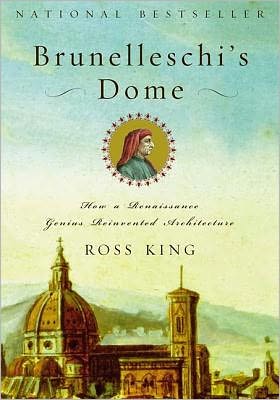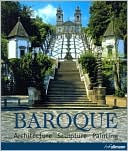Picturing the Celestial City: The Medieval Stained Glass of Beauvais Cathedral
The cathedral of Saint-Pierre in Beauvais, France, is most famous as a failure—its choir vaults came crashing down in 1284—and only secondarily for its soaring beauty. This lavishly illustrated and elegantly written book represents the first serious look at the stunning collection of Gothic stained glass windows that has always dominated the experience of those who enter Beauvais Cathedral.\ Chapter by chapter, Michael Cothren traces the glazing through four successive campaigns that bridged...
Search in google:
"Picturing the Celestial City presents the Gothic stained glass of Beauvais Cathedral in the first and only serious scholarly venture ever undertaken, and it does so superbly. Beauvais is one of the great French Gothic cathedrals discussed in every architectural survey--the tallest and the 'final' one of the series, its audacity checkmated by the collapse of the high vaults in 1284. Cothren has a magnificent command of the growing body of research about it and makes an enormous contribution to the research. His scholarship is sound and thorough, and his writing is fluent, graceful, and convincing."--Meredith P. Lillich, Syracuse University"Not only will this book--by a scholar in high esteem in the field--be a staple for scholars and students of medieval stained glass. Addressing as it does the medieval life of the cathedral in a broadly defined spirit, it will also be welcomed by those interested generally in Gothic architecture and medieval architecture who seek insight into the entire cathedral and its life."--Stephen Murray, Columbia UniversityJames Bugslag - Journal of Stained Glass[T]his is a splendid selection of both archival and recent photographs that provides excellent visual documentation. . . . [T]his book . . . without a doubt constitutes the most accessible scholarly study of the 13th- and 14th- century glazing of Beauvais Cathedral to date and is likely long to remain so. . . . Cothren hs not only worked out the chronology of the glas brilliantly; he presents it here with admirable clarity.
Picturing the Celestial City\ The Medieval Stained Glass of Beauvais Cathedral \ \ By Michael W. Cothren \ Princeton University Press\ Copyright © 2006 Princeton University Press\ All right reserved.\ ISBN: 0-691-12080-3 \ \ \ Introduction\ We cite the choir of Beauvais because it pushes the construction system of the great thirteenth-century churches to its limit. It is structural theory put into practice, even if with exaggerated consequences. From this viewpoint, this edifice could not be studied with too much care. It is the Parthenon of French architecture, lacking only completion and placement at the center of a wise and caring people like the ancient Greeks, who would value, respect, and laud such great accomplishments of human intelligence. -Eugène Viollet-le-Duc, Dictionnaire raisonné de l'architecture française (1854) \ The Cathedral of Beauvais stands today as a formidable fragment whose brittle skeletal masses continue to challenge and dominate the rolling hills and modest modern architecture of the surrounding terrain. But for students of Gothic architecture, this monument is most famous as a failure. Viollet-le-Duc tried to label Beauvais the Parthenon of French architecture, analyzing it as the apogee of structural rationalism, in theory if not in practice, but his successors have searched more often for the significance and source of the disastrous collapseof the vaults in 1284, highlighting the building's shortcomings rather than eulogizing its sophistication. Romantics sought-still seek-to situate structural failure as counterpoint to the hubris of thirteenth-century technology. In this moralized reading, disaster is the just reward for unbridled ambition. Modernist interpreters, on the other hand, have used close archaeological examination or state-of-the-art structural technology to establish what they believe is a more objective reading. But for almost everyone who has approached the cathedral, ascertaining why the choir fell, or what the choir looked like before it fell, has been the focus. Stone and structure have stayed on center stage.\ Cathedrals, however, were not structured entirely of stone. Painted glass dominates the interior of Beauvais (plates 15, 201), much as the virtuoso deployment of masonry-alternately massive and brittle-commands principal attention from the exterior. The mode may be less muscular, but the message is more focused, the meaning more complex. Stained-glass windows present a series of overlapping theological and didactic prompts, pictured in a medium that also casts a mysterious and fugitive wash of color over the delicately carved surfaces and throughout the boldly sculpted spaces of the interior. The variety is rich, including windows of the thirteenth, fourteenth, fifteenth, sixteenth, seventeenth, nineteenth, and twentieth centuries, a veritable catalogue of changing glazing styles and subjects. One chapel is filled with a saturated mosaic of small-scale narrative scenes from the mid-thirteenth century, creating a theologically charged setting centered on the celebration of the Mass (plate 1). In another chapel, viewers are drawn to a side wall where, in the melting lyricism of a Mannerist tableau, a noble donor memorializes his beloved wife, plotting his and her meanings-past, present, and future-on a diagram of earthly suffering and celestial reward, all of which is set in relationship to fictive and actual representations of the cathedral itself (plate 212). Within the main choir space, the monumental clerestory is populated by robust standing saints, gathered as a cloud of witnesses, hovering perpetually above the earthly congregations grounded beneath them (plates 15, 104, 201).\ Unlike the grandiose architecture that situates them in space, the medieval stained-glass windows of Beauvais Cathedral have received little scholarly attention. The only monograph is an imaginative iconographic description by a local priest at the middle of the nineteenth century, precious testimony of the state of the glazing before important modern reworkings, but of limited art historical utility. Even if the sixteenth-century windows have figured prominently in survey studies of French Renaissance stained glass, their thirteenth-century predecessors were rarely mentioned in the pioneering surveys that established the modern study of this major medium of medieval painting at the middle of the twentieth century, an omission almost unique among important High Gothic glazings. With the fourteenth-century windows, scholarly accounts are even more problematic, marred by confusion and misdating, rather than by neglect. Why has the medieval glazing of Beauvais Cathedral fared so poorly in the historiography of stained glass?\ Initially the medieval windows of Beauvais were passed over because of withering critical assessment. Local antiquarians reserved their admiration for the Renaissance windows of the sixteenth-century transept. In 1803 Jacques de Cambry dismissed the medieval windows of the chapels in one sentence as "fragments from the ninth, tenth, or eleventh centuries" and dedicated five pages to rapturous discussion of Renaissance windows. Somewhat later, a description by A. Gilbert failed even to mention the thirteenth-century windows, cataloguing only the sixteenth-century windows "executed during the most illustrious period in the history of glass painting." Once tastes changed, and medieval stained glass moved to critical crosshairs, the ensemble of early windows, though disarming, may have seemed intimidatingly complex. Unlike the cathedrals of Chartres or Bourges, Saint-Ouen at Rouen, or the Parisian Sainte-Chapelle, the glazing of the choir of Beauvais is not a homogeneous whole. It is neither of one piece nor is it a combination of discrete but expansive programs joined with clean seams. For various reasons it presents a "bricolage," patched from a series of intermittent creative impulses, each partially preserved, rather than melded, from the progressive steps, steady and staged, of a carefully planned comprehensive project. Still other scholars avoided Beauvais because of a received misconception that the surviving windows are rendered problematic, if not art historically suspect or downright useless, by disfiguring restorations. The present study will work to discredit spurious questions of authenticity based on folkloric skepticism and substitute the evidence of a careful and extended examination of the stained-glass windows themselves, indicating that they are surprisingly well preserved.\ In sum, the limited historiography of the Gothic glazing of Beauvais may be the result of misguided doubts concerning its authenticity, of its intimidating complexity, or of the distractions of more universally admired and better documented examples of Renaissance stained glass. This book will attempt to remedy this neglect-whatever its etiology-by seeking to bring the medieval glazing of the choir of Beauvais into the mainstream of medieval art history, arguing that it is both sufficiently well preserved and sufficiently significant to support and merit serious interpretive study. Although it will be bound by several diachronic threads-sacramental alignment, hagiographic regionalism, stylistic synchronism-I will address the four main phases of the medieval glazing in four essentially independent investigations, untangling the confusing complexity of the "bricolage" by establishing a chronological outline and then situating the successive campaigns within contemporary contexts of production and meaning.\ Method\ My investigation of the medieval stained glass of Beauvais has evolved over several decades, at a time when the discipline of art history was undergoing significant transformation. From a mid-twentieth-century positivist fixation on questions of style and subject-resolved by coordinating close visual analysis (Morellian connoisseurship) and the matching of pictorial compositions with written texts (Panofskian iconography)-art historians have gradually redirected attention to reception, ideology, and the broader historical nexus, fashioning a "new" art history, grounded in a series of theoretical and political perspectives and saturated in postmodern relativism and self-reflection. Many of the central interpretive conclusions in this monograph echo this ongoing revitalization of the discipline, especially in linking windows with Eucharistic theater and in uncovering the motives and motivations of those who conjured up the programs presented to medieval viewers as well as the role of the viewers themselves in bringing those programs continually to life. But while embracing recent critical viewpoints and affirming the pictures they allow us to paint of the society within which these works of art were created and consumed, I have chosen not to discard entirely some approaches associated with art historians of a previous generation. The conclusions they allow me to draw become a necessary foundation on which more topical "readings" can be built.\ In other words, my subject demands a coordinated and multifaceted approach. In a very real sense, the stained-glass windows of Beauvais Cathedral are introduced here for the first time to the scholarly community; only after close attention to their stylistic, technical, and archaeological disposition, can they even be addressed as cultural artifacts. For example, medieval stained glass presents serious connoisseurship challenges. Since the medium itself is fragile, and since windows are vulnerable to a variety of environmental and cultural threats, present from the moment of their installation, determining the degree to which the works we now see reflect those produced by medieval artists and seen by medieval viewers is no simple task. First the windows themselves must be discovered, their extant panels subjected to material and stylistic scrutiny to weed out passages of replacement glass. In some instances the panels themselves must be rearranged, their windows reconstructed from fragmentary evidence. To accomplish this, some old-fashioned analysis, rooted in laborious-potentially tedious-examination of the glazing, must be carried out, panel by panel, piece by piece. Although the reader will be spared a full narration of this process, I would be less than honest if I allowed it to remain an unacknowledged foundation for cultural interpretation. Indeed, for some readers it may offer fascinating information on the production of medieval stained glass rather than providing a corollary or prerequisite to the contextual study it allows. The presentation of this material, however, occasions the use of some charged terminological chestnuts that need to be problemetized in order to clarify my own critical position in relation to them. They will be deployed here under the following definitions:\ hand/artist/glass painter: These terms are used interchangeably to evoke an individual who executed, or participated in the execution of, a stained-glass window. I have tried to avoid designations that imply a hierarchy of involvement-words such as "master," "assistant," "apprentice," "artisan," "designer," or "author." There may have been hierarchies of production practice within the creation of medieval windows, but since we know very little concerning the organization of this labor, I have sought to assume a flattened collaborative model. style: A mode of making windows. Style can encompass the posture and appearance of humans (figure style), ways of telling stories (narrative style), habits of framing (ornamental style), and approaches to the application of paint (painting style). workshop: A group of individuals gathered to make windows. Since the complicated task of producing stained glass implies a corporate model of work, this word is used here to evoke a collaborative workforce. It is difficult to know if workshops were defined by style, by materials, by geographic location, or by something else, but it seems clear that windows were produced by groups, rather than by individuals. Some members of those groups were glass painters; perhaps all were. iconography: A strictly Panofskian notion of recovered subject matter, usually rooted for us (though not necessarily for the original viewers) in matching images with written texts that were knowable to those who commissioned, created, or consumed medieval images and visual narratives.\ I do not seek to reify the positivist assumptions of objective meaning, or the claim on historical validity, that were implied when these terms were employed by an earlier generation of art historians. But instead of discarding such useful critical categories, I have elected to employ but also disrupt them by acknowledging their artificiality. They should be taken simply as practical interpretive constructs that evoke, rather than represent, a real past that was undoubtedly much less tidy than such categories of analysis may suggest. When used for such practical purposes, they allow us to coax out critical chapters in the stories that these windows have to tell, and writing those stories is the enterprise I have chosen to undertake.\ Message\ A primary aim here will be to encourage readers and viewers at the beginning of the twenty-first century to imagine the moment, at the middle of the fourteenth, when the current disposition of the medieval glazing was essentially fixed. Not only is it necessary to examine later transformations and translocations to return windows to their original appearance and position. We also must grasp how and what this glazing program would have communicated to those who frequented the cathedral when the windows were new. Throughout I will be arguing that one important-perhaps the most important-function of these glowing wall paintings was the creation of a theologically rich stage setting for the regular performance of Eucharistic theater, one that would either encourage communicants to meditate on iconic images that signify the meaning of the Mass itself or provide visual prompts for heard, remembered, or imagined sermons concerning the lives that worshipers were expected to lead. This is not how the function of stained glass within the medieval church environment has most frequently been viewed.\ A persistent misconception has long cast its distorting shadow over the historiography of medieval painted windows: the notion that stained glass, indeed monumental medieval pictorial art in general, was conceived and produced as a substitute text for ignorant, illiterate folks, providing them a so-called Bible of the Poor. Much of my argument is directed to demonstrate the inadequacy of this widely held view. It would, of course, be ridiculous to maintain that this art was nonbiblical. But instead of offering a more widely accessible parallel to written scripture, stained-glass windows offered theological speculations, moral admonitions, contemporary extrapolations, and exemplary role models, frequently rooted in scriptural traditions. Sermon rather than scripture is the proper analogy for these pictorial texts.\ Sermons, like windows, are often based on biblical passages and offered as explication or interpretation of the scriptural text to an audience of faithful believers sophisticated enough to follow the associations. With this distinction in mind, I invite the reader to consider how the progress of my art historical interpretation from chapter to chapter sets up arguments for each set of windows as visual sermons rooted in the biblical epigraphs of each chapter. Whereas this study is grounded in the detailed examination of one neglected glazing program as it evolved through creation and transformation over the course of a century, my general interpretive agenda is more ambitious. Through the investigation of this one particular glazing, I hope to give readers an expanded understanding of how stainedglass windows shaped the experiences of medieval worshipers who lived out their spiritual lives and mapped out their spiritual journeys in front of them. I seek to open this monument, in other words, to precisely the sort of receptive contemporary audience envisioned by Eugène Viollet-le-Duc in the passage cited at the beginning of these introductory comments: "a wise and caring people ... who would value, respect, and laud such great accomplishments of human intelligence."\ (Continues...)\ \ \ \ \ Excerpted from Picturing the Celestial City by Michael W. Cothren Copyright © 2006 by Princeton University Press. Excerpted by permission.\ All rights reserved. No part of this excerpt may be reproduced or reprinted without permission in writing from the publisher.\ Excerpts are provided by Dial-A-Book Inc. solely for the personal use of visitors to this web site. \ \
Ch. IThe first campaign : glazing the virgin chapel during the 1240s5Ch. IIThe second campaign : the original glazing of the upper choir, ca. 1255-1265101Ch. IIIThe third campaign : post-collapse repair and refurbishment in chapels during the 1290s125Ch. IVThe fourth campaign : restorers and creators, working upstairs and down in the 1340s151App. ATransformation and restoration of the medieval glazing : a brief historyApp. BStained glass from the Saint-John Chapel, now in the Musee de Picardie, AmiensApp. CThe houses of Roche Guyon and the Chatelains of Beauvais in the fourteenth century
\ Church HistoryCothren's agility in choosing the appropriate means with which to tease out a possible solution to a given problem allows him to embrace the multifaceted approach crucial to an understanding of the monument as a whole. His visual observations of the figural as well as physiognomic style in each window, carried out on a microanalytic level, elicit questions and suggestions that lead to the most complete investigation of the glazing program of Beauvais up to the present time.\ — Mary Weitzel Gibbons\ \ \ \ \ Journal of Stained Glass\ - James Bugslag\ [T]his is a splendid selection of both archival and recent photographs that provides excellent visual documentation. . . . [T]his book . . . without a doubt constitutes the most accessible scholarly study of the 13th- and 14th- century glazing of Beauvais Cathedral to date and is likely long to remain so. . . . Cothren hs not only worked out the chronology of the glas brilliantly; he presents it here with admirable clarity.\ \ \ Church History\ - Mary Weitzel Gibbons\ Cothren's agility in choosing the appropriate means with which to tease out a possible solution to a given problem allows him to embrace the multifaceted approach crucial to an understanding of the monument as a whole. His visual observations of the figural as well as physiognomic style in each window, carried out on a microanalytic level, elicit questions and suggestions that lead to the most complete investigation of the glazing program of Beauvais up to the present time.\ \ \ \ \ Journal of Stained Glass[T]his is a splendid selection of both archival and recent photographs that provides excellent visual documentation. . . . [T]his book . . . without a doubt constitutes the most accessible scholarly study of the 13th- and 14th- century glazing of Beauvais Cathedral to date and is likely long to remain so. . . . Cothren hs not only worked out the chronology of the glas brilliantly; he presents it here with admirable clarity.\ — James Bugslag\ \








